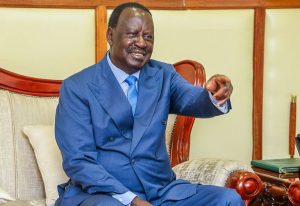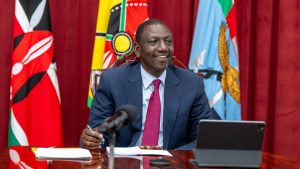AUDA-NEPAD gears up for the commemoration of fourth AMRH week in Maputo, Mozambique


By Baboloki Semele: In a momentous gathering set to take place from October 28 to November 1, 2024, at the Radisson Blu Hotel in Maputo, Mozambique, the African Medicines Regulatory Harmonization (AMRH) initiative will celebrate its 15th anniversary. The event, known as AMRH Week, is a biennial meeting organized by the AMRH Joint Secretariat comprising the African Union Development Agency-NEPAD (AUDA-NEPAD) and the World Health Organization (WHO). According to the concept note AUDA-NEPAD sent to this publication, this year’s theme, 15 Years of AMRH as a Foundation for the African Medicines Agency (AMA), underscores the significant strides made in strengthening Africa’s pharmaceutical regulatory systems. Launched in 2009, AMRH has played a pivotal role in transforming fragmented regulatory frameworks across Africa into a more harmonized and efficient system. The concept note says, over the past 15 years, the initiative has made substantial progress in improving access to safe, affordable, and high-quality medicines across the continent. AMRH Week 2024 will provide an opportunity for high-level African leaders, policymakers, and global health experts to reflect on these achievements and chart a course for the future. Among the expected participants are representatives from African Union member states, Regional Economic Communities (RECs), AMRH technical committees, and heads of national regulatory authorities. The event will also draw members of the African Union Commission (AUC), AUDA-NEPAD, the WHO, Africa CDC, and various development partners.
Building on Success Amid Global Challenges
This year’s AMRH Week comes at a crucial time, as it coincides with the operationalization of the African Medicines Agency (AMA), a pan-African regulatory body envisioned to enhance collaboration and coordination in the regulation of medicines and medical products. The AMA’s establishment builds on the foundation laid by AMRH, which has already fostered better coordination and harmonization of regulatory practices. The AMRH initiative has faced unique challenges since its inception, notably during the COVID-19 pandemic. The 2020 edition of AMRH Week was held virtually due to the global health crisis, with the focus shifting to regulatory preparedness and response during public health emergencies. Despite these challenges, the initiative has continued to thrive, showcasing Africa’s resilience and commitment to improving healthcare for its citizens.
Key Objectives and Expected Outcomes
The 4th AMRH Week will serve as a platform to take stock of the progress made in implementing previous recommendations and advancing regulatory systems across Africa. Specific objectives include reviewing and adopting key technical documents such as continental guidelines, standard operating procedures (SOPs), and templates that support regulatory systems strengthening. Additionally, discussions will center around strategies to combat substandard and falsified medical products, which remain a critical issue in many African countries. The event will also see the launch of the AMRH Information Management Systems, designed to streamline regulatory processes further. Expected outcomes include a unified understanding of the current challenges in regulatory harmonization, strengthened partnerships, and collaborative solutions to enhance Africa’s capacity to detect and prevent the circulation of substandard medicines.
Activities and High-Level Participation
The week-long program will feature numerous meetings of AMRH technical committees and working groups, including sessions on Good Manufacturing Practices (GMP), the Evaluation of Medicinal Products (EMP), and Medicines Policy and Regulatory Reforms (MPRR). The highlight will be the African Medicines Regulators Conference, a closed-door meeting of the heads of national regulatory authorities. The opening ceremony, scheduled for October 30, will be graced by high-profile speakers, including the Permanent Secretary of Mozambique’s Ministry of Health, Dr. Tumi Semete-Makokotlela, CEO of the South African Health Products Regulatory Authority (SAHPRA), and Dr. Mohamed Ismail from WHO AFRO. The keynote speech will be delivered by Mozambique’s Minister of Health, officially inaugurating the event.
Charting the Path Forward
As AMRH celebrates 15 years of progress, this year’s AMRH Week is expected to provide critical insights and strategies for future regulatory efforts in Africa. By building on AMRH’s success, the African Medicines Agency is poised to play a transformative role in ensuring that all Africans have access to safe, effective, and affordable medical products. Building on the last year commemoration held in Accra, Ghana, it emerged that stronger regulatory systems in Africa are not just a precondition for success in crucial continental initiatives; they are also a great way to help funders deliver on the difficult but important goal of health system strengthening. It was also highlighted that calls to increase local vaccine manufacturing and improve access to critical medical countermeasures, a cornerstone of bolstered capacity for pandemic preparedness and response require efficient and effective regulation. Delegates from last year’s commemorations were informed that African countries will only be able to meet the ambitious target to manufacture 60 percent of its vaccine needs locally by 2040 if sufficient regulatory capacity is built in vaccine producing and consuming countries. They were therefore advised that building strong regulatory systems also helps countries and funders to move away from siloed, vertical programs in favor of health systems strengthening. This transition was said to be possible because the path to build regulatory systems as well as the metrics for success have been agreed on and are clearly outlined in the WHO Global Benchmarking Tool. More broadly, goals such as expanding health coverage, eliminating substandard and falsified medicines, and making supply chains for quality-assured products more resilient require strong regulators. Unfortunately, African countries and funders have not yet met this demand with adequate financing support. AMRH week creates a critical opportunity for this to change.
An opinion by this publication, ahead of the Maputo commemoration is that a clear plan must be finalized, clearly communicated, and actively implemented for the what, why, and how funding African regulatory system can be strengthened. New entities have entered the continent’s regulatory ecosystem, such as AMA, and regulatory processes at all levels have gotten more complex and interconnected as they become more advanced. It is up to the African Union—and its implementing agency, the African Union Development Agency (AUDA-NEPAD) and AMA to take stock and identify funding needs for regulatory systems strengthening including its continental technical agenda and capacity development; RECs; and NRAs—including the relevant scales and timeframes. Building on the workplans already in development, clear objectives and asks to funders can incentivize strategic investments. Convenings like this week’s AMRH Week are an important first step to coordinate and set priorities among the various national regional, continental, and global initiatives and networks in the African regulatory system.
A funding plan will help map out the critical transition away from donor financing towards a self-funded African regulatory system. Fees charged to companies that submit products for regulatory review will be a key source of funding for a self-sufficient, harmonized system. The African Union will need to help implement these industry fees for harmonized regional and continental activities and determine their distribution between the national, regional, and continental levels, given the separate yet coordinated nature of medicines regulation. A successful fee-based system will be dependent on industry users’ ability to reap benefits through faster, simpler, and less onerous procedures. So while fees can help the African regulatory agencies establish independence and credibility, and therefore reduce their dependence on aid and government budgets, they are likely a long-game in many countries. Therefore, the continent will need technical, financial, and advocacy support in the interim to create a conducive environment for a self-sufficient, fee-based system.
A good business case should be made to heads of states and ministries of finance in African governments in order to secure higher levels of domestic financing for regulatory strengthening. These calculations should factor in the economic and public health gains likely to result from more effective and efficient systems that speed up patient access to quality products and remove substandard and falsified products from the market. At current budget levels, domestic financing often accounts for a small proportion of funding for regulation. For example, government funding accounted for less than 20 percent of the annual funding for Tanzania’s NRA, on average. Low contributions from African Member States reflects a lack of value placed on regulation in a well-functioning health system, competition for limited resources, and a historic reliance on donor financing to access essential medical products that have been prequalified by the WHO or quality assured by global procurement mechanisms. Budget levels for regulation must increase through significant injections from domestic financing and by ramping up industry fees. Until domestic funding can increase to sufficient levels, donor funds must be made available to support this essential component of the health system, particularly where there is a risk of preference being given to lower cost products by procurers.
Additionally, NRAs must be legally and financially empowered to collect fees and reinvest sufficient amounts into their own systems. As it stands, several African countries do not have autonomous or semi-autonomous regulatory authorities. As a result, these countries lack mechanisms for collecting industry fees and/or are forced to route fees straight to their Treasuries, bypassing opportunities to strengthen their systems.
While governments work to increase domestic contributions and industry fees are ramped up for harmonized activity, donor support will be critical for the African regulatory system. Historically significant sources of funding and technical assistance are no longer available, due in part to the reduction in the UK’s aid budget and the lapse of the World Bank’s Global Medicines Regulatory Harmonization Multi-Donor Trust Fund. Currently, a small handful of donors, including the Gates Foundation and now the European Union, provide the bulk of financial support for regulatory systems strengthening, with funding allocations split between for the nascent AMA and AMRH, including directly to NRAs in key countries. Other donors, including the Swiss Development Corporation, USAID, and the German government (through several channels, such as the Federal Institute for Drugs and Medical Devices; GIZ, the German Agency for International Cooperation; the Paul-Ehrlich-Institute; and the Physikalisch-Technische Bundesanstalt), distribute funds and technical support across the regulatory landscape to the WHO, RECs, AMRH, and several NRAs.
Donor funding provides critical support, but gaps remain that must be filled to ensure comprehensive funding for Africa’s regulatory system. For example, funds and technical assistance have been extended to some but not all RECs, leaving out the Common Market for Eastern and Southern Africa and the Economic Community of Central Africa States, among others. Similarly, NRAs in countries such as Ghana, Liberia, Sierra Leone, Nigeria, Tanzania, Kenya, Senegal and South Africa have received funding and technical assistance from multiple partners, but many other countries have not.
Regulatory strengthening initiatives should be integrated into efforts to increase vaccine manufacturing. Funding vehicles like grants, debt and equity financing, and loans have been deployed to expand manufacturing capacity in Africa for health products. Many of these significant recent investments to increase vaccine manufacturing in Africa have overlooked the need to fund regulatory authorities—and, as mentioned, stronger regulatory systems are needed for successful local manufacturing initiatives. These existing initiatives should incorporate benchmarks for regulatory capacity building to leverage existing funding vehicles and reinforce the importance of strong regulatory systems. In parallel, donors should deploy similar funding instruments for efforts specific to regulatory systems strengthening.
In addition to leverage funding from existing sources, new funding sources should be secured, including development banks, global procurement agencies, and other high-income countries. These donors can help mobilize and allocate private sector funding while insulating regulators from political pressures—a risk of domestic public funding. As more donors enter the space, increased coordination will be needed to avoid redundancy.







